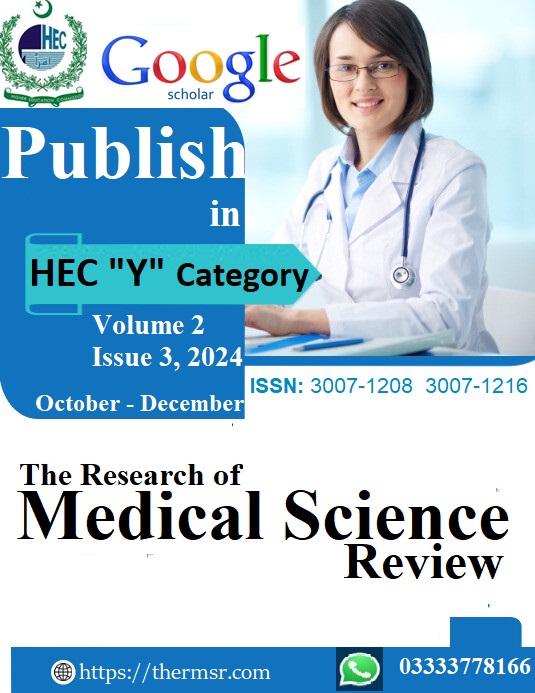COMPARISON OF STAPLES AND POLYPROPYLENE SUTURES FOR SECURING THE MESH IN LICHTENSTEIN’S TENSION-FREE INGUINAL HERNIA REPAIR IN TERMS OF POSTOPERATIVE PAIN
Keywords:
Staples, Polypropylene Suture, Fixation, Elective Lichtenstein, Mesh Repair, Inguinal Hernia, Post- Operative PainAbstract
Background: For securing the mesh in Lichenstein tension free inguinal hernia mesh repair, polypropylene suture has been used traditionally. However, the staples made from stainless steel, offers advantage of easier placement and result in remarkable reduction in wound closure time and postoperative pain.
Objective: To compare the outcomes of staples and polypropylene suture for mesh fixation in patients undergoing elective Lichtenstein tension free mesh repair for inguinal hernia in terms of post-operative pain.
Material and Methods: From November 2023 to July 2024, this randomized controlled trial was conducted with 168 male patients with age 20-60 years who were randomly assigned to either staples (Group-A) or suture (Group-B). Post- operative pain was assessed using Visual Analogue Scale over one-week follow-up. Data were analyzed using SPSS, employing Chi-square tests to compare pain intensity between groups.
Results: The Group-A, with a mean age of 47.33±13.79 years, showed lower pain levels compared to Group-B (47.10±11.60 years). Pain on the first postoperative day was notably higher in Group-B, with 89.3% reporting moderate pain, compared to 66.7% in Group-A (p<0.001). By the seventh day, 100% of Group-A patients reported mild pain, whereas 31% of Group-B continued to experience moderate pain (p<0.001).
Conclusion: Performing Lichtenstein inguinal hernioplasty and anchoring the mesh with staples in comparison with polypropylene suture results in reduction in both the average operative time and postoperative pain.
Downloads
Downloads
Published
Issue
Section
License

This work is licensed under a Creative Commons Attribution-NonCommercial-NoDerivatives 4.0 International License.














